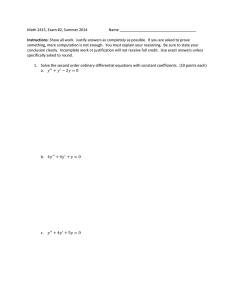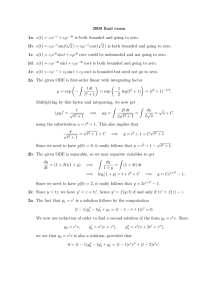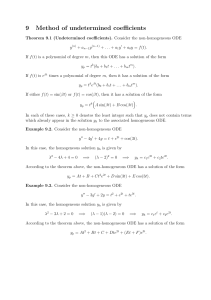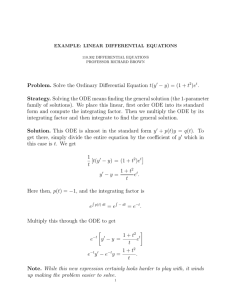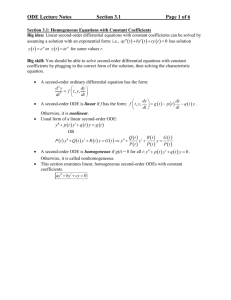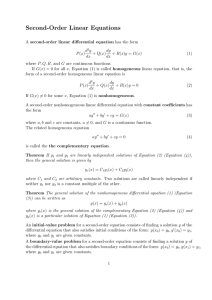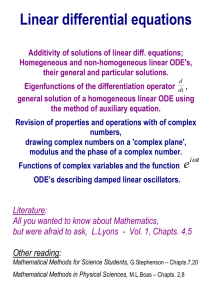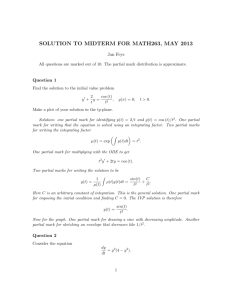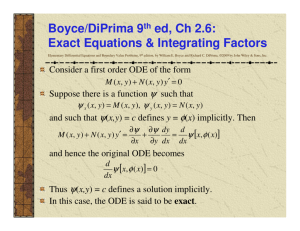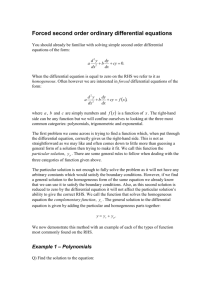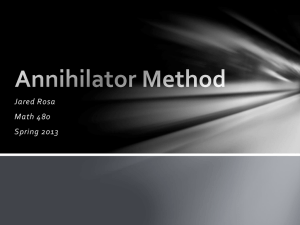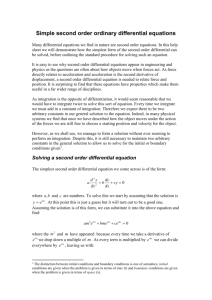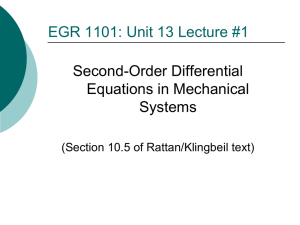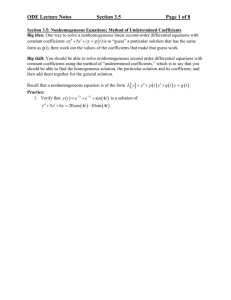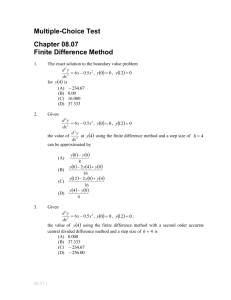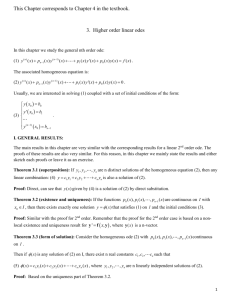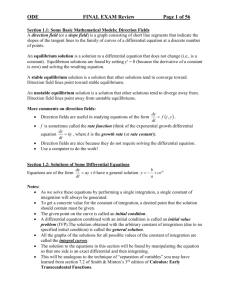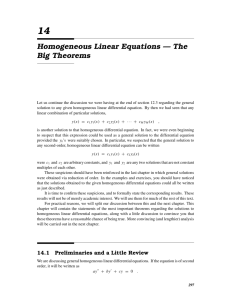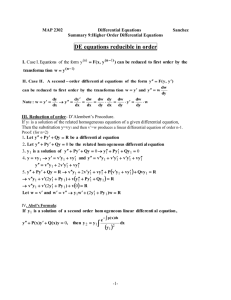2320Worksheet 5 LHODE with Constant Coefficients
advertisement
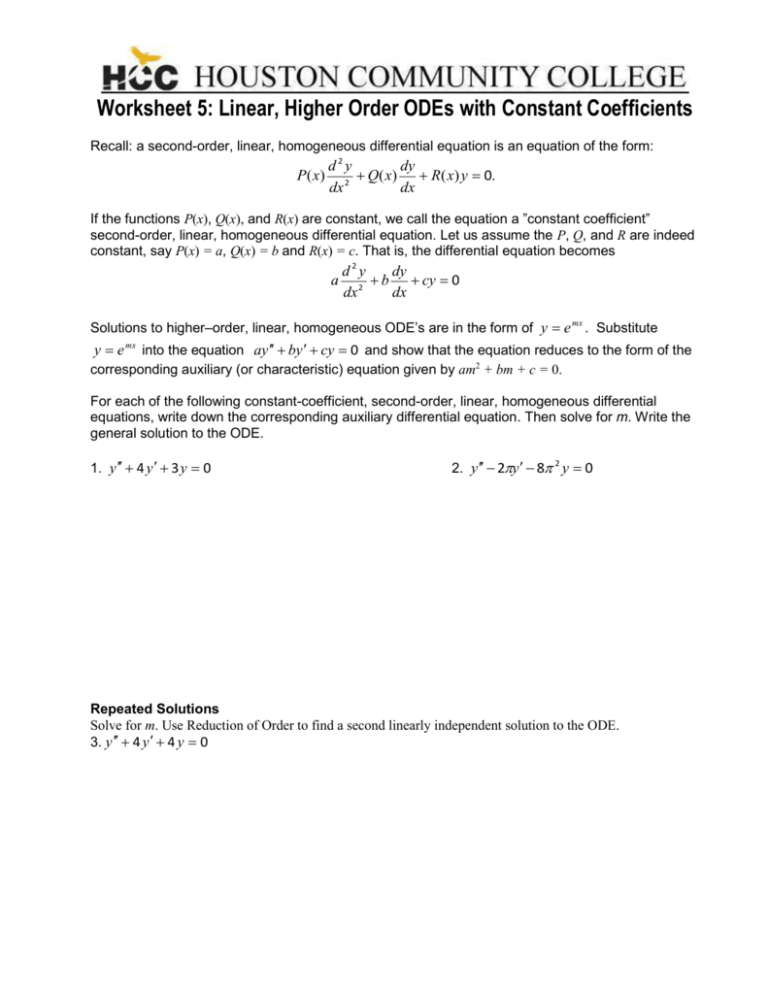
Worksheet 5: Linear, Higher Order ODEs with Constant Coefficients Recall: a second-order, linear, homogeneous differential equation is an equation of the form: P( x) d2y dy Q( x) R( x) y 0. 2 dx dx If the functions P(x), Q(x), and R(x) are constant, we call the equation a ”constant coefficient” second-order, linear, homogeneous differential equation. Let us assume the P, Q, and R are indeed constant, say P(x) = a, Q(x) = b and R(x) = c. That is, the differential equation becomes a d2y dy b cy 0 2 dx dx Solutions to higher–order, linear, homogeneous ODE’s are in the form of y e mx . Substitute y e mx into the equation ay by cy 0 and show that the equation reduces to the form of the corresponding auxiliary (or characteristic) equation given by am2 + bm + c = 0. For each of the following constant-coefficient, second-order, linear, homogeneous differential equations, write down the corresponding auxiliary differential equation. Then solve for m. Write the general solution to the ODE. 1. y 4 y 3 y 0 2. y 2y 8 2 y 0 Repeated Solutions Solve for m. Use Reduction of Order to find a second linearly independent solution to the ODE. 3. y 4 y 4 y 0 If a linear, homogeneous ODE with constant coefficients has an auxiliary equation with a solution of m = , multiplicity n, then solutions to the ODE are: y1 = ex, y2 = xex, y3 = x2ex, . . . , yn = xn–1ex. Solve each ODE. 4. y 6 y 9 y 0 5. y ( 4 ) 4 y 4 y 0 Imaginary Solutions. Recall that e ix cos x i sin x . Use this to explain why cos x sin x 1 ix e e ix and 2 1 ix e e ix . 2i If the solutions to the auxiliary equation are m = ± i, then the general solution to the ODE will then be of the form y ex [c1 cos( x) c2 sin( x)] . Find the solutions to y 4 y 6 y 0 Nonhomogeneous, Linear, Higher–Order ODE’s with Constant Coefficients. Suppose we have a non-homogeneous constant-coefficient differential equation d2y dy b cy G(x) . 2 dx dx 2 d y dy Let yc(x) be the complementary solution to a 2 b cy 0 and yp(x) be the particular solution to dx dx d2y dy a 2 b cy G(x) . Then the general solution is y(x) = yc(x) + yp(x). dx dx a Given G(x) we want to be able to guess a suitable yp(x). Fill in the table below with guesses for yp(x) (using the method of undetermined coefficients): If G(x) = guess for yp(x) ex x x3 x3e–2x sin 3x x2 sinx x3 + xex e–x cos 2x ex sin x – 3 ex cos x 5 – 2sin x – 3e4x + cos (2x) Solve. 5 y y 6e 2 x , y(0) = 0, y (0) 10 Warning!!! If your guess is already a solution to the complementary homogeneous problem, you must multiply by xr where r is the smallest power so that no term in the particular solution is of the same form as a term in the complementary solution. Try to solve the differential equation y y 2 y e x Solve. y 4 y 4 y xe2 x cos 2 x
